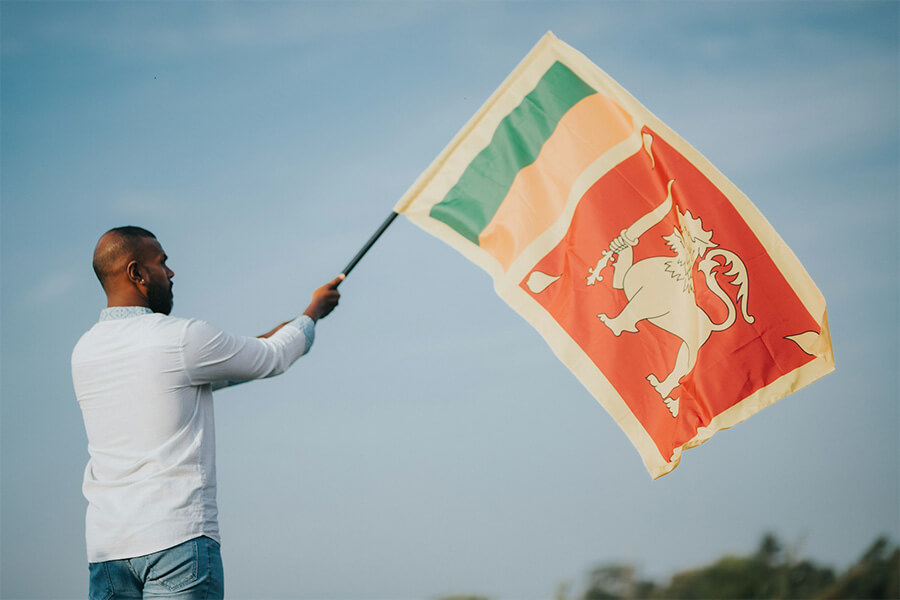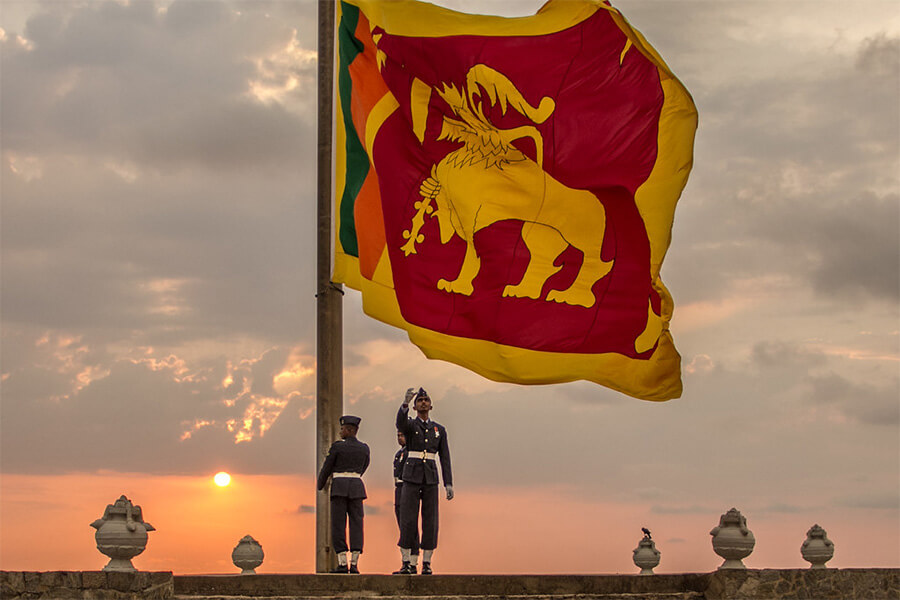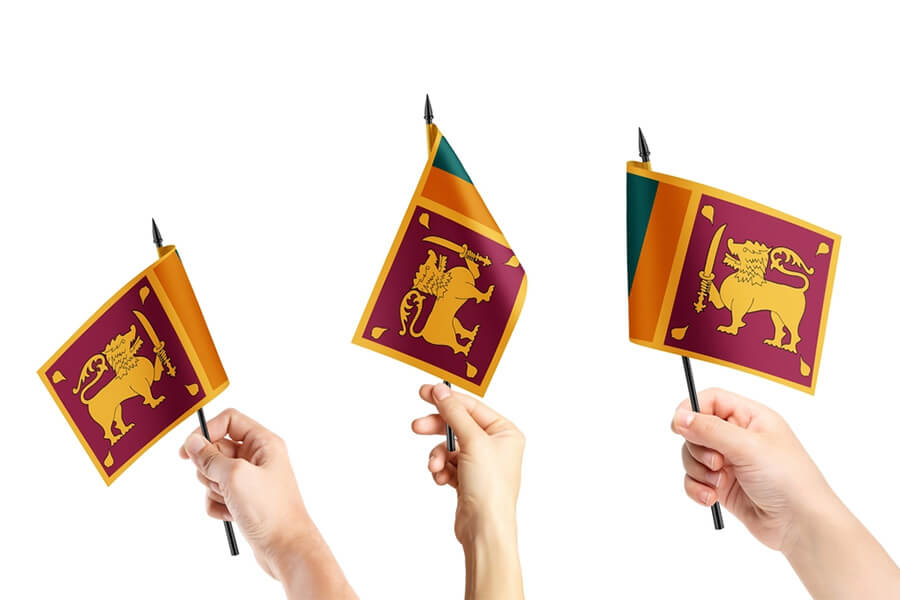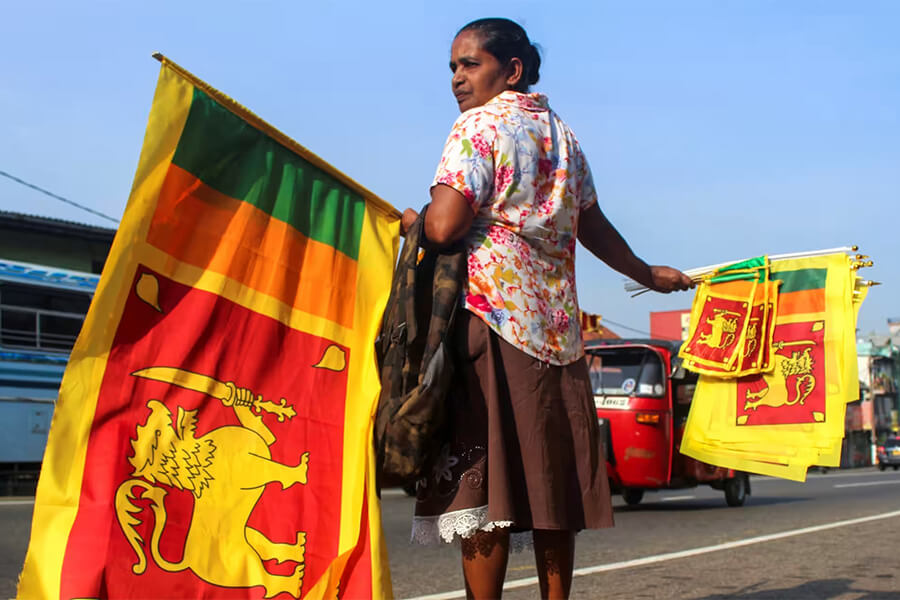Exploring the vibrant culture and rich history of Sri Lanka wouldn’t be complete without understanding the significance of its national flag. Whether you're on a Sri Lanka local tour or simply learning about the country's heritage from afar, the national flag of Sri Lanka - with its striking lion emblem - offers deep insight into the island’s identity.
Introduction of Sri Lanka National Flag – Country Flag with Lion
The national flag of Sri Lanka, often referred to as the Lion Flag, is a powerful symbol of the nation’s heritage, unity, and pride. Known for its vibrant colors and distinctive design, the flag of Sri Lanka encapsulates the country’s rich history, cultural values, and aspirations. Featuring a golden lion holding a sword, the flag is one of the most recognizable national flags in the world. This article explores the history, symbolism, and cultural significance of flag, delving into its unique elements and its role in shaping national identity.
Overview of the Flag of Sri Lanka
The national flag of Sri Lanka consists of a gold lion holding a kastane sword on a maroon background, flanked by two vertical stripes of green and orange on the hoist side, and four bo leaves in the corners of the maroon field. Adopted on May 22, 1972, the flag represents the country’s Sinhalese majority, Tamil and Muslim minorities, and its deep-rooted Buddhist traditions. The design is both bold and meaningful, reflecting Sri Lanka’s diverse cultural and historical landscape.
Unique Design of Flag
The flag stands out due to its intricate and symbolic design. The central feature, the golden lion, is derived from the Sinhalese royal emblem, symbolizing strength and courage. The maroon background signifies the Sinhalese community, while the green and orange stripes represent the Tamil and Muslim communities, respectively. The four bo leaves, sacred in Buddhism, emphasize the importance of compassion, loving-kindness, equanimity, and happiness. This combination of elements makes the flag of Sri Lanka a unique representation of unity in diversity.
Sri Lanka Flag History – Evolution of the National Flag of Sri Lanka
Origin of the Lion Symbol in the Sri Lankan flag
The lion symbol, a cornerstone of the Sri Lanka flag, traces its origins to ancient Sinhalese royalty. According to legend, the Sinhalese people descend from Prince Vijaya, who arrived in Sri Lanka around the 5th century BCE, accompanied by a lion. The lion became a symbol of the Sinhalese monarchy and was featured in royal banners. When designing the national flag, the lion was chosen to honor this heritage, representing the strength and resilience of the Sinhalese people.
Historical Changes to the Flag
The national flag of Sri Lanka has undergone several transformations. Initially, during the Kandyan Kingdom, the lion flag was a simple design featuring a golden lion on a red background. After independence from British rule in 1948, a committee was formed to design a flag that represented all communities. The modern flag, adopted in 1972, included the green and orange stripes to symbolize the Tamil and Muslim minorities, ensuring inclusivity in the flag.
Influence of Colonization on National Flags Sri Lanka
Colonization significantly influenced the evolution of the Sri Lanka flag. During Portuguese, Dutch, and British rule, local symbols like the lion were suppressed, and colonial flags were used. The British colonial flag, featuring the Union Jack, was prominent until independence. Post-1948, the push for a national identity led to the revival of the lion symbol, with modifications to reflect the country’s multicultural fabric, resulting in the modern national flag of Sri Lanka.
Sri Lanka Flag Meaning – Symbolism Behind the National Flag of Sri Lanka
The Lion and the Sword – Strength and Sovereignty
The golden lion holding a kastane sword is a potent symbol of strength, bravery, and sovereignty. The sword represents the nation’s ability to defend itself and maintain independence. The lion, a traditional emblem of the Sinhalese, underscores the historical and cultural significance of the majority community while symbolizing the nation’s resilience and pride.
Meaning of the Four Bo Leaves in the Flag of Sri Lanka
The four bo leaves in the corners of the maroon field are drawn from Buddhist tradition, representing the four noble virtues: loving-kindness, compassion, equanimity, and sympathetic joy. These leaves highlight Sri Lanka’s deep Buddhist heritage and its commitment to ethical and spiritual values, making the flag a unique blend of cultural and religious symbolism.
Sri Lanka Flag Colors Significance
Sri Lanka flag colors are rich with meaning. The maroon background represents the Sinhalese majority, while the green stripe symbolizes the Muslim community, and the orange stripe represents the Tamil community. The gold border and lion signify purity and nobility. Together, these colors reflect Sri Lanka’s multicultural society and its aspiration for unity and harmony.
Cultural and Political Importance of the National Flag of Sri Lanka
The Flag as a National Identity Symbol
The national flag of Sri Lanka is a powerful emblem of national pride and unity. It is a unifying symbol for Sri Lanka’s diverse ethnic and religious communities, fostering a sense of shared identity among Sri Lankan people. The flag is prominently displayed during national events, political gatherings, and cultural festivals, reinforcing its role as a beacon of Sri Lankan heritage.
Role of National Flag in National Celebrations
The Sri Lanka flag plays a central role in national celebrations, such as Independence Day on February 4th and other cultural festivals. It is hoisted at government buildings, schools, and public spaces, symbolizing unity and patriotism. During these events, the flag inspires pride and serves as a reminder of the country’s journey toward independence and progress.
Protocols and Respect for the Sri Lanka National Flag
How to Properly Display the National Flag of Sri Lanka
Proper display of the flag is governed by strict protocols. The flag should always be hoisted with the lion facing the observer’s left when vertical. It must never touch the ground or be used for decorative purposes. When displayed with other flags, the Sri Lankan flag takes precedence, reflecting its status as a national symbol.
National Flag Etiquette in Sri Lankan Culture
Respect for the national flag is deeply ingrained in Sri Lankan culture. Defacing or disrespecting the flag is considered a serious offense. During flag-raising ceremonies, individuals are expected to stand in respect, and the flag must be lowered at sunset unless illuminated. These practices underscore the reverence for the national flags of Sri Lanka.
Comparisons with Other National Flags – What Makes Sri Lanka Flag Unique?
Comparing the Flag of Sri Lanka with Other Asian National Flags
Compared to other Asian national flags, the flag of Sri Lanka is distinctive for its use of a lion, a rare symbol in regional flags. While flags like those of India and Bangladesh feature simpler designs with stripes or circular emblems, the Sri Lanka flag’s combination of a lion, bo leaves, and multicolored stripes reflects its unique cultural and historical narrative.
Lion Symbol in Other Flags Around the World
The lion symbol appears in other national flags, such as those of Ethiopia and Singapore, but its depiction in the Sri Lanka flag is unique due to its historical and cultural context. Unlike the stylized lion in Singapore’s flag or the religious connotations in Ethiopia’s, Sri Lanka’s lion is tied to royal and ethnic heritage, making it a distinct feature among national flags.
Fun Facts About the Sri Lanka National Flag
Did You Know? Interesting Trivia About the Sri Lankan Flag
- The Sri Lanka flag is one of the oldest continuously used flags in the world, with the lion symbol dating back to ancient Sinhalese kingdoms.
- The flag’s design was finalized after extensive consultations to ensure representation of all major communities in Sri Lanka.
- The kastane sword held by the lion is a traditional Sinhalese weapon, symbolizing the nation’s martial heritage.
World Records or Mentions Related to National Flags Sri Lanka
In 2011, Sri Lanka set a world record for the largest flag ever displayed, measuring over 100 meters long, showcasing national pride on a grand scale. The flag has also been mentioned in international forums for its unique design, earning recognition as one of the most symbolic national flags in the world.




